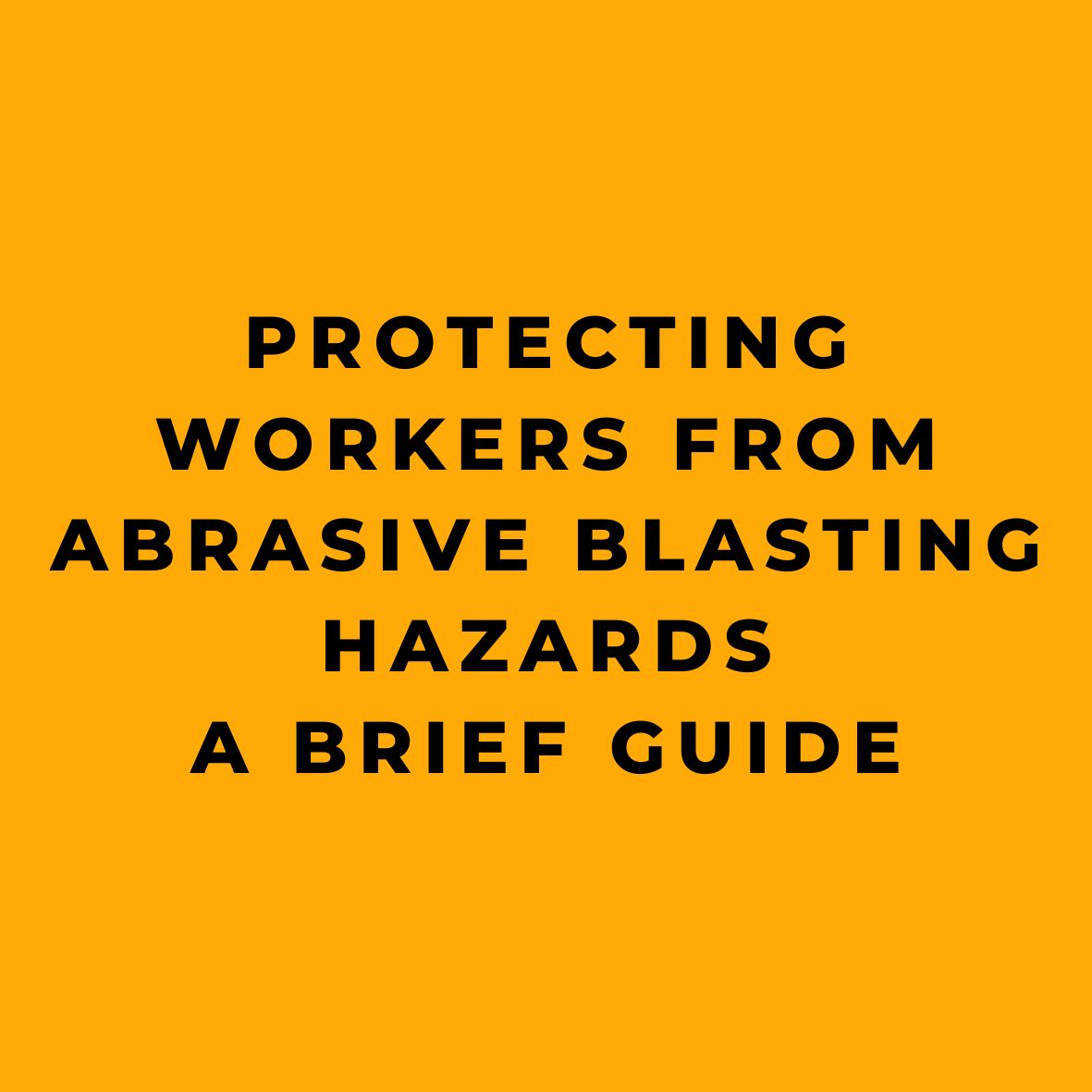Let’s talk about keeping workers safe during abrasive blasting activities. We’re going to cover engineering and administrative controls, personal protective equipment (PPE), including respiratory protection, and training.
Abrasive Blasting Materials
There’s a whole smorgasbord of commonly used abrasive materials, such as silica sand, coal slag, garnet sand, nickel slag, copper slag, glass, steel shot, steel grit, and specular hematite.
If you’re looking for alternative, less toxic blasting materials, check out these options: ice cubes, dry ice, plastic bead media, sponge, sodium bicarbonate (yep, good ol’ baking soda), ground walnut shells, ground corn cob, other biodegradable materials, and even high-pressure water.
Health Hazards
Abrasive blasting can kick up a whole lot of dust and noise, so it’s important to be aware of the risks. The abrasive material and the surface being blasted might contain toxic stuff like lead paint or silica, which can be hazardous to workers.
Silica sand can cause some nasty problems, like silicosis, lung cancer, and breathing issues for exposed workers. Coal slag and garnet sand may also cause lung damage similar to silica sand, based on some preliminary animal testing. Copper slag, nickel slag, and glass also have the potential to wreak havoc on your lungs.
On the bright side, steel grit and shot are less likely to cause lung damage. But keep in mind that slags can contain trace amounts of toxic metals like arsenic, beryllium, and cadmium.
Reducing Exposure
Now, engineering controls like substitution, isolation, containment, and ventilation are your primary means of keeping those exposures to airborne hazards low during abrasive blasting operations. Administrative controls, like good work and personal hygiene practices, can also help reduce exposure. And if those controls can’t keep exposures below OSHA permissible exposure limits, then you’ll need to use respiratory protection.
Engineering Controls
Let’s break down those Engineering Controls:
- Substitution
- Opt for a less toxic abrasive blasting material.
- Use abrasives that can be mixed with water (slurry) to cut down on dust.
- Isolation and Containment
- Put up barriers and curtain walls to separate the blasting operation from other workers.
- Use blast rooms or blast cabinets for smaller jobs.
- Set up restricted areas for non-enclosed blasting operations.
- Keep coworkers away from the blaster.
- Ventilation
- Use exhaust ventilation systems in containment structures to capture dust.
Administrative Controls
As for Administrative Controls, you’ll want to:
- Perform routine cleanups using wet methods or HEPA filtered vacuuming to minimize toxic dust buildup.
- Avoid using compressed air for cleaning, as it’ll create dust in the air.
- Clean and decontaminate tarps and other worksite equipment.
- Schedule blasting when the least number of workers are present.
- Avoid blasting in windy conditions to prevent spreading hazardous materials.
Personal Hygiene Practices
Now let’s talk Personal Hygiene Practices:
- Don’t allow eating, drinking, or tobacco use in blasting areas.
- Provide wash stations for workers to clean their hands and faces regularly and before eating, drinking, or smoking.
- Vacuum or remove contaminated work clothes before eating, drinking, or smoking.
- Provide end-of-shift showers, change areas, and separate storage for street clothes, protective clothing, and equipment.
- Keep contaminated clothing and equipment out of the clean change area.
Respirator Protection
For Respiratory Protection, workers need an abrasive-blasting respirator that covers the head, neck, and shoulders, protecting from rebounding abrasive. Use only NIOSH-approved respirators to guard against dusts produced during abrasive blasting operations. Support personnel involved in cleanup and other related activities might also need respiratory protection.
PPE
Don’t forget other Personal Protective Equipment:
- Hearing protection
- Eye and face protection
- Helmet
- Leather gloves that cover the full forearm and aprons (or coveralls)
- Safety shoes or boots
Worker Training and HAZCOM
Finally, Worker Training and Hazard Communication:
- Train abrasive blasters and support personnel on health and safety hazards, control use, personal hygiene practices, safe work practices, and the use of PPE and respirators.
- Manufacturers must include health hazard information on blasting materials’ safety data sheets (SDS) as required under OSHA’s Hazard Communication standard (29 CFR 1910.1200).
- Obtain and read the manufacturer’s SDS for health hazard information on the abrasive blasting material in use.
Conclusion
In conclusion, worker safety during abrasive blasting activities is crucial. To protect workers, we need to implement engineering and administrative controls, use personal protective equipment (PPE), including respiratory protection, and provide comprehensive training. With a range of abrasive materials available, choosing less toxic alternatives can greatly reduce health hazards. By being aware of the risks involved, we can minimize workers’ exposure to harmful substances.
Engineering controls, such as substitution, isolation, containment, and ventilation, are the primary means of reducing exposure to airborne hazards. Administrative controls and personal hygiene practices also contribute to a safer work environment. If exposure cannot be kept below OSHA permissible limits, respiratory protection becomes necessary.
Equipping workers with proper PPE, including hearing protection, eye and face protection, helmets, gloves, and safety shoes or boots, is essential for their well-being. Providing training on health and safety hazards, control use, personal hygiene, safe work practices, and PPE usage ensures that workers are well-prepared to handle abrasive blasting operations.
Finally, understanding and adhering to OSHA’s Hazard Communication standard (29 CFR 1910.1200) is vital for both manufacturers and workers. Manufacturers must include health hazard information on the safety data sheets (SDS) of blasting materials, while workers should familiarize themselves with these SDS to stay informed about potential health hazards. By following these guidelines and prioritizing safety, we can protect workers from the hazards of abrasive blasting materials and create a safer work environment for all.
For more information about Abrasive Blasting Hazards in Shipyard Employment visit this OSHA Guide for Abrasive Blasting Hazards in Shipyard Employment.
References:










